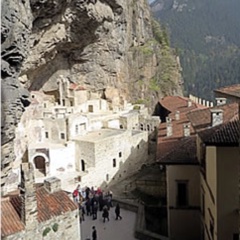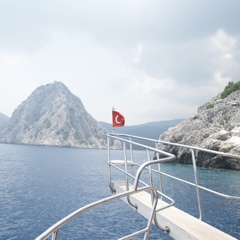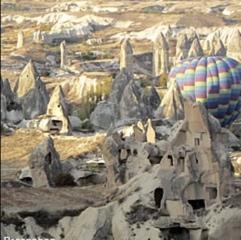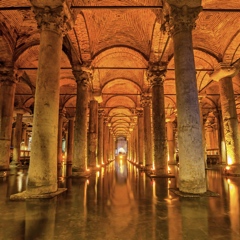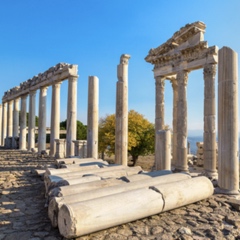The Bosphorus is the 32-kilometer (20-mile)-long north-south strait that joins the Sea of Marmara with the Black Sea in Istanbul and separates the continents of Europe and Asia.
Today, the way to enjoy the Bosphorus is to take a cruise by Dentur Avrasya boat, TurYol boat, or traditional Şehir Hatları ferry, a self-guided tour of the European shore, or to relax at a tea-house restaurant along its shores. You can enjoy a Bosphorus cruise north toward the Black Sea in less than 90 minutes, a few hours, or all day, as you wish.
About the Bosphorus

Istanbul Strait (Istanbul Boğazı) was traditionally called Boğaziçi ("Within the Strait"), and more recently, it's been called the Istanbul Strait, perhaps to differentiate it from the Dardanelles (Hellespont), called the Çanakkale Boğazı. The width of the Bosphorus varies from 500 meters (1640 feet) to 3 km (2 miles), and its depth ranges from 50 to 120 meters (164 to 394 feet), averaging about 60 meters (197 feet) deep.
It runs right through the heart of Istanbul, past the Istanbul Modern Art Museum, several Ottoman palaces, at least two fortresses, forested hills, and shore villages with Ottoman architecture. (For self-guided touring, I've divided it into the Southern BosphorusNorthern Bosphorus
It is crossed by three bridges and a rail tunnel: the southernmost Bosphorus Bridge (Boğaziçi Köprüsü), the central Mehmet the Conqueror Bridge (Fatih Köprüsü), the Marmaray Railroad Tunnel, and the Yavuz Selim Bridge at the Bosphorus's northern-end confluence with the Black Sea (2016).
The Bosphorus is one of the world's busiest commercial shipping channels, with some 140 cargo vessels making the 90-minute passage each day (at 7 or 8 knots), carefully navigating the seven precise turns necessary to follow the Bosphorus's narrow channels and avoid its treacherous currents.
Even though, by law, there are two highly experienced local pilots aboard each vessel during passage and giant radar towers monitoring all maritime movements in the strait, accidents occasionally happen.
The Bosphorus in Legend

The Bosphorus's English name comes from a Greek legend: Zeus had an affair with a beautiful woman named Io. When Hera, his wife, discovered his infidelity, she turned Io into a cow and created a horsefly to sting her on the rump. Io jumped clear across the strait. Thus, bous = cow and poros = crossing place: Bosphorus = "crossing place of the cow."
Recent marine archeological research in the chill, deep waters of the Black Sea has revealed sunken cities on the underwater slopes along the Turkish coast.
Geological evidence supports the theory that in ancient times, the northern end of the Bosphorus was blocked by earth and rock. The Black Sea had no outlet (like Lake Van today), and its water level was below that of the Aegean Sea, the Sea of Marmara, and the Bosphorus.
However, an earthquake destroyed the Bosphorus blockage, releasing a deluge of water from the Bosphorus into the Black Sea, raising the water level and flooding its coastal communities. So it may well be that the Bosphorus is the source of Noah's flood and the legend of Noah's Ark! (Mount Ararat is also in Turkey.)
The Bosphorus in History
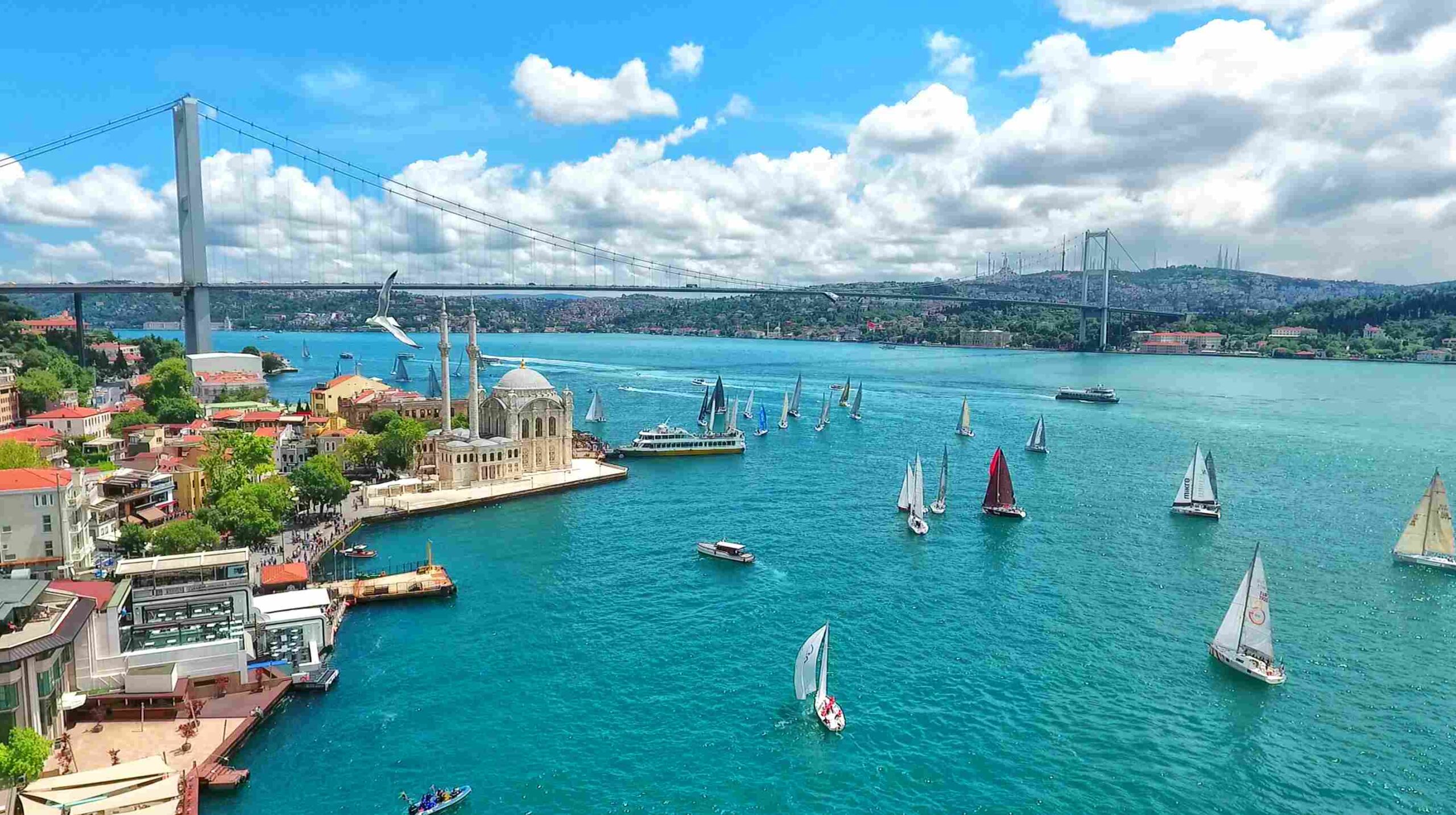
The Bosphorus has been a waterway of the highest importance since ancient times. Ulysses passed through. Byzas, who founded Byzantium (later Constantinople, later Istanbul), sailed up and down, looking for the perfect place to find his village.
In 1452, Mehmet the Conqueror ordered the construction of the mighty fortresses of Rumeli Hisarı (Fortress of Europe) and Anadolu Hisarı (Fortress of Anatolia) so he could control the strait and prevent reinforcements from reaching the besieged Byzantine capital of Constantinople.
To the Ottomans, it was mostly an obstacle: each spring, they had to ship their gigantic armies across the strait from Istanbul for campaigns in Anatolia, Syria, and Persia.
During World War I, the Bosphorus was the key to the Black Sea and Russia. The Sultan held the key. The Entente powers wanted it. What they failed to get in battle, they got by treaty, and British gunboats anchored outside Dolmabahçe Palace.
Popular Activities Near Bosphorus Strait
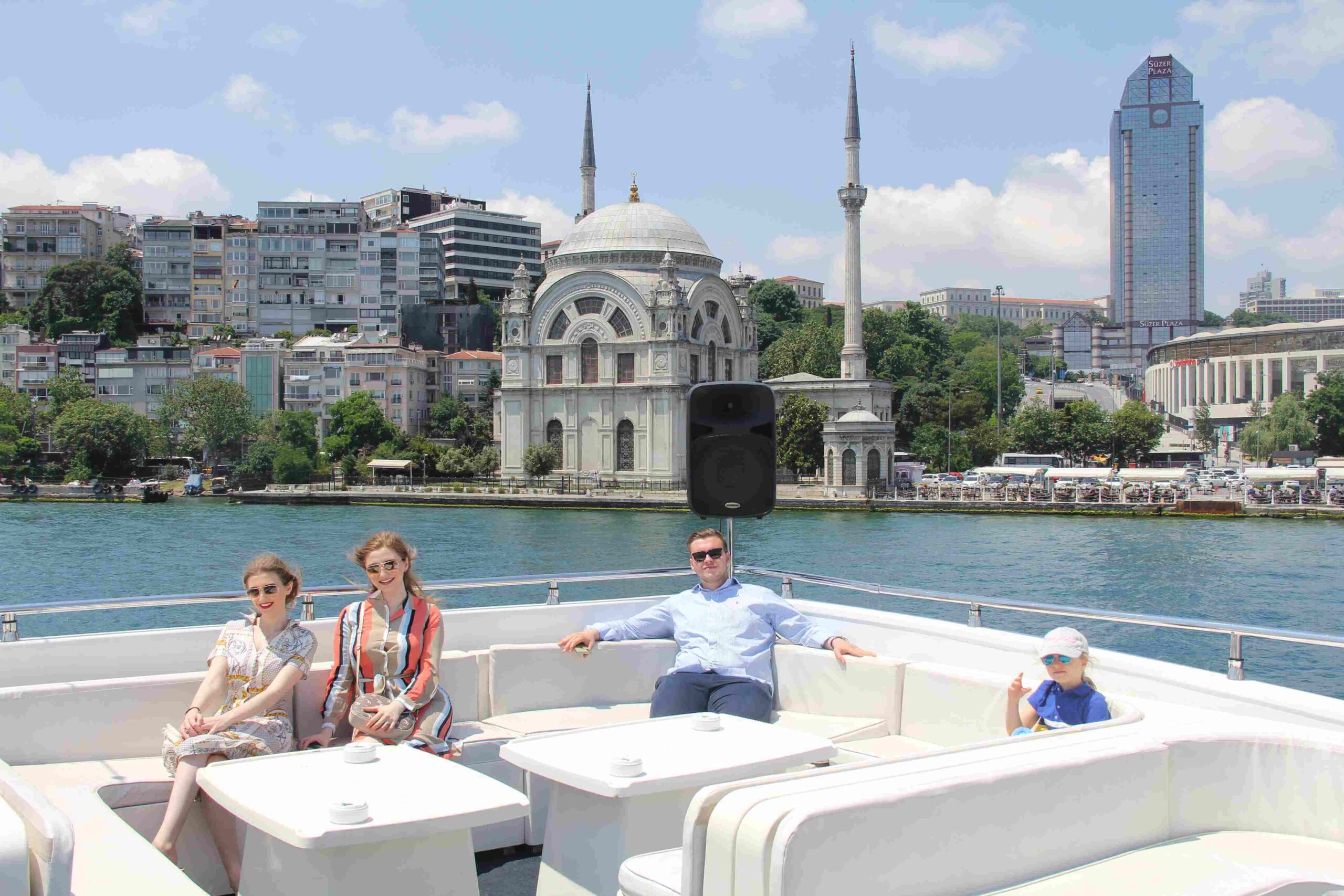
If you're looking for an exciting way to experience Turkish culture and breathtaking views, consider exploring the Bosphorus Strait in Istanbul. Travelers can enjoy a variety of experiences in the area near the Bosphorus Stride, from breathtaking cruises to dining at five-star restaurants.

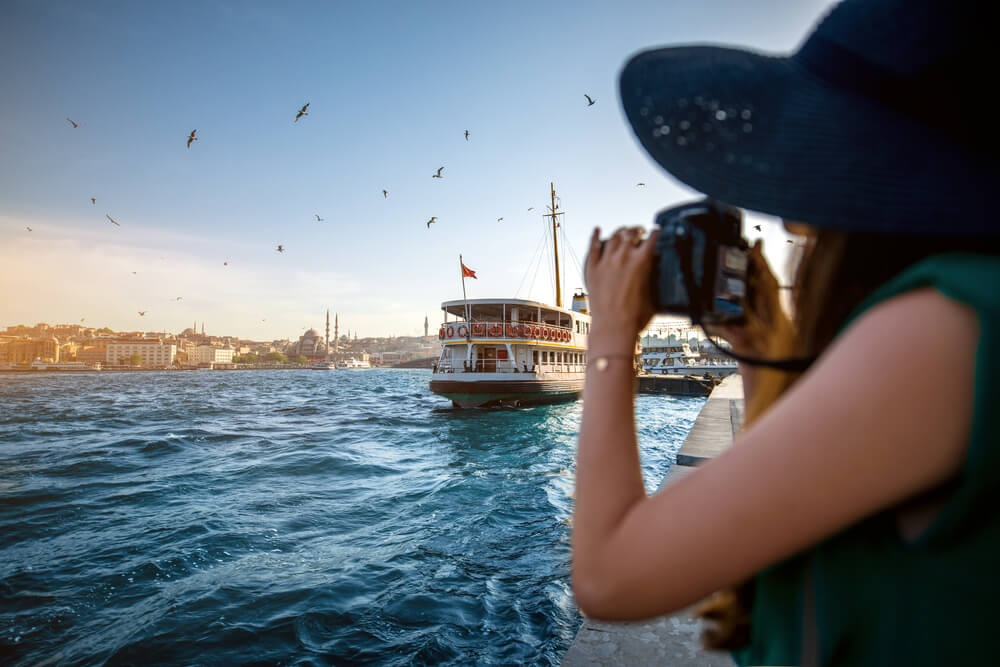
1. Bosphorus Cruises
If you're visiting Istanbul, a Bosphorus cruise is a must-do activity. It provides a unique perspective of the city as you sail between Europe and Asia. During the cruise, you can admire stunning views of historical landmarks, luxurious palaces, and impressive bridges. Additionally, your local guide offers insider knowledge and a glimpse into the rich cultural history of this city. Often, complimentary snacks and drinks are provided during these trips. This is definitely one of the best ways to gain a new perspective on Istanbul.

2. Dining at Five-Star Restaurants
You can discover a wide range of exquisite five-star Turkish restaurants along the Bosphorus, serving authentic Turkish cuisine. You can try all kinds of kebabs and dishes such as lamb sis kebap, lamb chunks, stuffed cabbage, mixed grill, chicken sis kebab, lamb Adana kebap, and rice pilav (rice pilaf), accompanied by a rich cream sauce, green bell peppers, olive oil, and pita bread.
These family-owned business restaurants are always a great way to experience the richness of Bosphorous Turkish cuisine. After your dinner, try some of the traditional desserts, such as baklava and tulumba, or some modern tastes, such as moist yellow sponge cake and Sebastian cheesecake, along with a hot cup of Turkish coffee to enjoy an even more delicious combination. It is no wonder Turkish food, and Bosphorous Turkish cuisine are so popular around the world.

3. Visiting Historical Places
The area near the Bosphorus Stride is a rich place of historical landmarks. From the grandeur of Dolmabahçe Palace to the ancient Rumeli Fortress, there are plenty of historical sites to explore. As you walk along the strait, you'll encounter various sites that narrate the story of Istanbul's past, from the Byzantine era to the Ottoman Empire.

4. Try Street Food Vendors
If you don't fancy a five-star restaurant on your visit to Istanbul and want to try something more local and traditional, you can always try many of the delicious street food vendors near the Bosphorus Stride. Dishes such as tavuk pilav (rice and chicken), simit, mussels, kokereç, ciğ köfte, and boiled corn are among the most popular options for visitors to try Turkish street food at affordable prices.
Also, you can find smaller shops selling Turkish food favorites like doner kebap, stuffed cabbage, and lentil soup. After your meal, remember to enjoy a cup of warm Turkish coffee or Turkish tea with baklava.
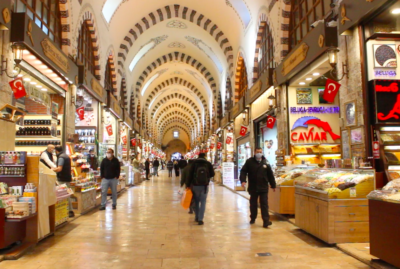
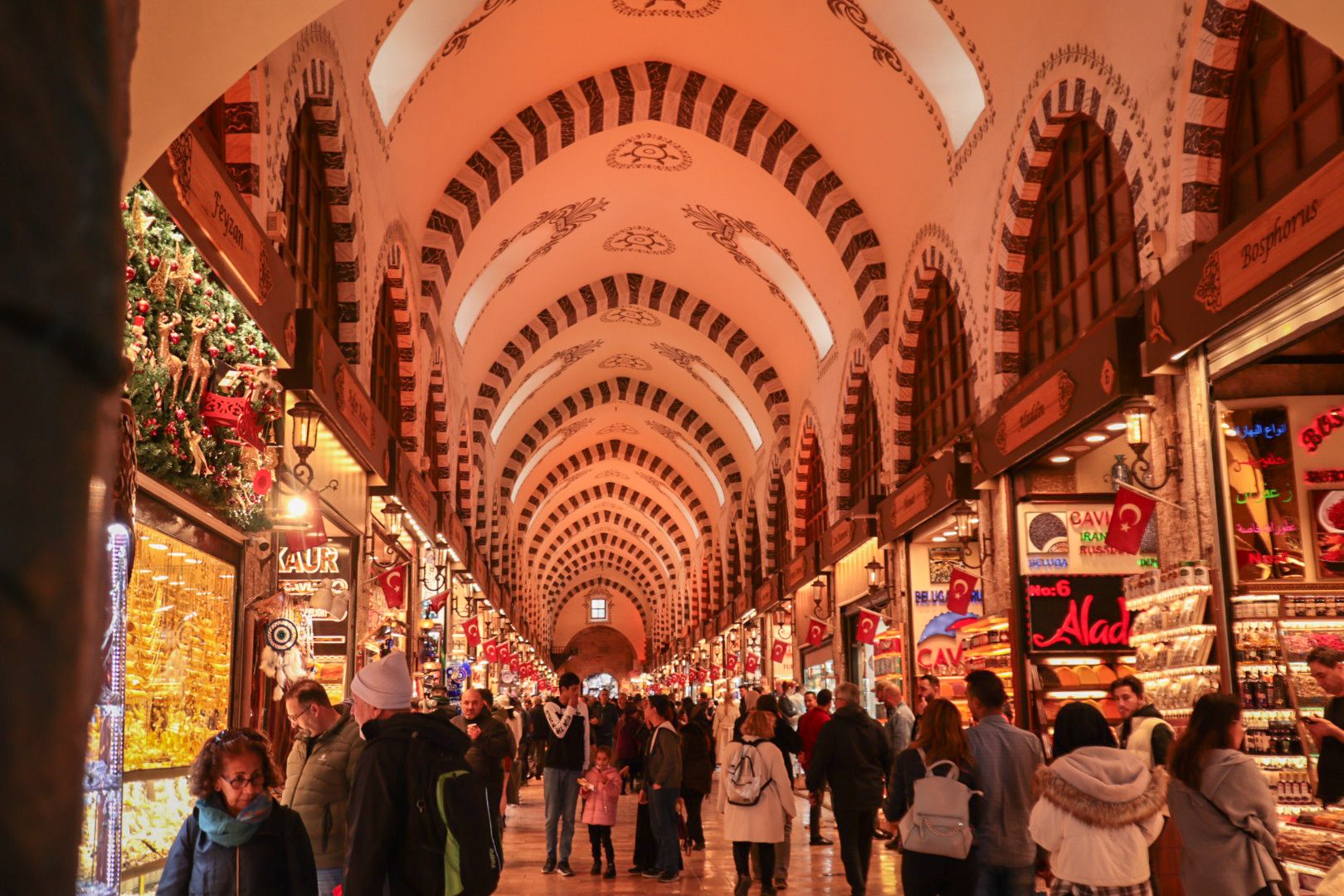
5. Explore the Local Markets
The area near the Bosphorus Stride is also commercially rich, with many local shops selling Turkish goods such as clothes, Turkish carpets, Turkish food, ornaments, jewelry, and local souvenirs. It is the perfect place to buy gifts for your friends and family. Insider tip: Always remember to bargain before you purchase something on the local markets.
Moreover, these local markets are also a perfect place to try traditional Turkish pastries and cafes. You can find the most popular Turkish pastries in these cafes, such as Açma, Gözleme, Katmer, Lokma, Kunefe, and Baklava. Generally, great service and a wonderful experience follow these local tastes, so don't forget to leave a kind review! Moreover, the colorful layout of the market area and shops is sure to catch your eye and prove worthwhile for your time.
by Tom Brosnahan, updated by Can Turan



